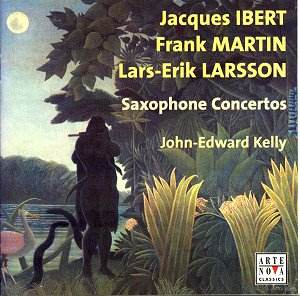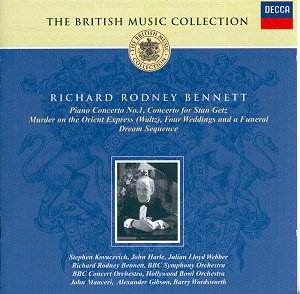 Composer: Lars-Erik Larsson
Composer: Lars-Erik Larsson
Works: Konsert för Saxofon och Stråkorkester (1934), Ballade pour Saxophone et Orchestre (1938), Concertino da Camera (1935)
Performers: John-Edward Kelly (saxophone), Ostrobothnian Chamber Orchestra/Juha Kangas
Recording: Snellman-Saal, Kokkola, Finland, June 4 & 6, 1991
Label: ARTE NOVA 74321-27786-2
The saxophone’s integration into the classical canon has always been a complex affair, often overshadowed by its jazz lineage and relegated to a niche existence within concert halls. Lars-Erik Larsson, a Swedish composer active in the early to mid-20th century, provides a fascinating case study of this dynamic in his Konsert för Saxofon och Stråkorkester, a work that seeks to elevate the instrument beyond its conventional confines. Joined by the Ostrobothnian Chamber Orchestra under the adept direction of Juha Kangas, John-Edward Kelly’s performance breathes life into a repertoire that, while limited, reveals much about the saxophone’s potential in classical settings.
The album presents three significant works, each contributing to the lexicon of saxophone literature. Larsson’s concerto, composed in 1934, stands out for its lyrical melodies and orchestral color, showcasing the saxophone’s unique voice. The work’s architecture is both straightforward and engaging, with its thematic material often juxtaposed against lush string textures. Larsson’s orchestration, while not revolutionary, is effective in providing a backdrop that allows the saxophone to soar. The first movement’s opening theme, with its gently ascending lines, encapsulates the lyrical quality that defines Larsson’s style, contrasting with the more agitated sections that follow.
Frank Martin’s Ballade pour Saxophone et Orchestre offers a starkly different emotional palette. Written in 1938, this work is characterized by its dramatic contrasts and intricate interplay between the soloist and orchestra. Kelly’s interpretation brings out the work’s brooding intensity, particularly in the second movement, where the saxophone’s voice emerges as both a lament and a declaration. The piano’s concertante role adds an additional layer of complexity, creating a rich dialogue that is both athletic and contemplative. The precision of Kelly’s articulation, especially in rapid passages, is commendable, showcasing his technical prowess while maintaining an expressive quality that resonates with Martin’s intent.
Jacques Ibert’s Concertino da Camera serves as a delightful counterpart to the other two works. Written in 1935, it embodies a neo-classical spirit that is both playful and challenging. Ibert’s wit shines through in the brisk tempos and rhythmic complexities, demanding a high level of agility from the soloist. Kelly delivers with aplomb, navigating the intricate passages with clarity and panache. The orchestral accompaniment, while competent, often feels secondary to the solo saxophone’s exuberance, which is a hallmark of Ibert’s compositional style. The buoyant themes that characterize the first movement invite a sense of joy that contrasts sharply with the introspection found in Martin’s ballade.
The recording quality captures the nuances of both Kelly’s playing and the orchestra’s contribution, although one might wish for a touch more clarity in the orchestral textures during climactic moments. Nevertheless, the overall sound engineering is satisfactory, allowing the listener to appreciate the intricate dialogue between the saxophone and strings.
Saxophone concertos often occupy a peculiar niche, straddling the line between classical and popular music traditions. This collection, featuring staples of the saxophone repertoire, is particularly advantageous for enthusiasts of the instrument. Kelly’s performances are both technically secure and artistically compelling, revealing the unique character of each work. While Larsson’s concerto may not challenge the boundaries of the concerto form, it nevertheless offers a pleasing encounter with the saxophone’s capabilities. The album serves as a well-curated introduction to the saxophone’s classical potential, making it a valuable addition to the libraries of both saxophonists and classical music aficionados.



